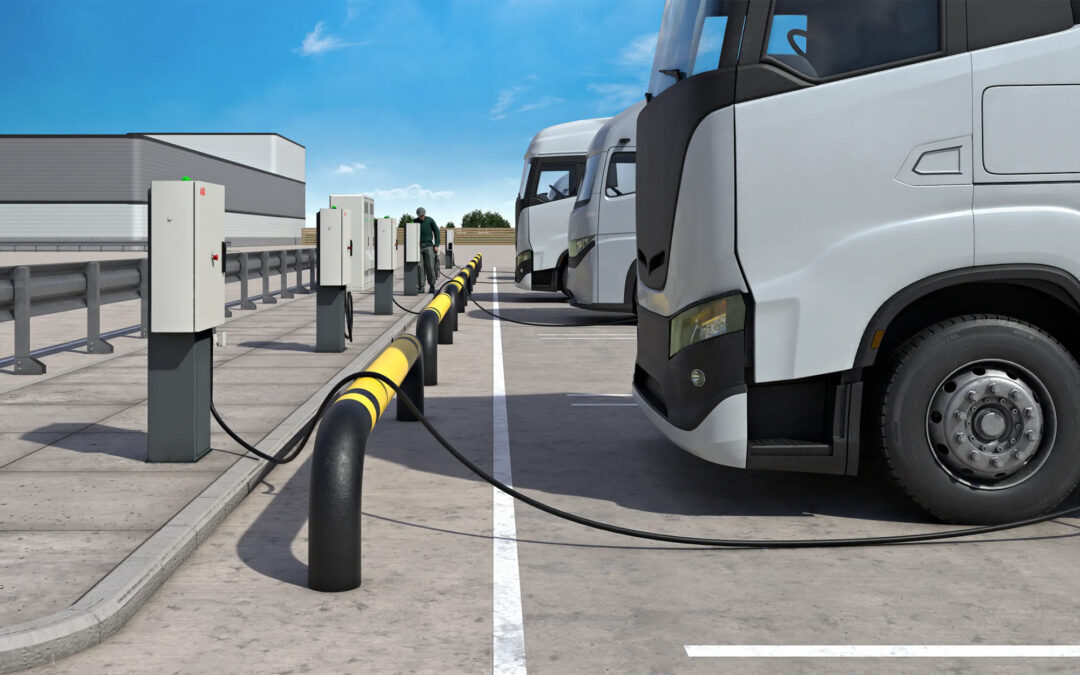Switching to electric vehicles (EVs) for your business fleet might seem expensive at first. The cost of buying electric vehicles and setting up charging stations can feel overwhelming. But over time, electric fleet charging could save your business a lot of money. For many companies, the long-term savings are worth the initial investment.
Explore how electric fleet charging can reduce costs and improve your bottom line. From fuel savings to lower maintenance costs and government incentives, you’ll see how electric fleets are a smart financial decision for businesses looking to save money in the long run.
Breaking Down Fuel Costs: Electricity vs. Gasoline
One of the biggest ways electric fleet charging saves money is through reduced fuel costs. Electric vehicles run on electricity, which is cheaper than gasoline or diesel. The difference becomes even more noticeable when you have a large fleet.
How Much Can You Save?
Electricity is more affordable and stable in price than gas. For example, charging an EV might cost around $15 for a full charge, depending on local electricity rates. This is significantly less than filling a tank with gas, which can easily cost $50 or more. Over a year, those savings add up. Imagine a fleet of 20 vehicles each saving $35 per fill-up. If each vehicle “fills up” three times a week, that’s over $100,000 in savings annually.
Benefit #1: Lower Maintenance Costs
Electric vehicles have fewer moving parts compared to gas-powered ones. They don’t need oil changes, fuel filters, or exhaust system repairs. This simplicity means EVs cost less to maintain over their lifetimes.
Why Maintenance Costs Are Lower
Electric motors are more efficient and experience less wear and tear than internal combustion engines. Here are some key maintenance differences:
- No Oil Changes: EVs don’t have traditional engines, so there’s no need for regular oil changes.
- Simpler Brake Systems: Many EVs use regenerative braking, which reduces wear on brake pads.
- Fewer Fluids: There’s no engine coolant or transmission fluid to replace.
Let’s take a hypothetical example. A business fleet of 15 gas-powered vehicles might spend $1,000 per vehicle annually on maintenance. Switching to EVs could reduce this cost to about $400 per vehicle annually. That’s a yearly savings of $9,000 across the fleet.
Benefit #2: Government Incentives and Rebates
Governments offer various incentives to encourage businesses to adopt electric fleets. These can include tax credits, rebates, and grants for purchasing EVs and installing electric fleet charging stations.
Common examples of savings opportunities include:
- Tax Credits for EV Purchases: Many governments provide credits for buying electric vehicles. For instance, a business might receive up to $7,500 per EV, significantly lowering the initial cost.
- Grants for Charging Stations: Setting up electric fleet charging infrastructure can be expensive, but grants and rebates can cover part of the cost. For example, a company installing five charging stations might receive $10,000 in rebates, reducing the financial burden.
By taking advantage of these programs, businesses can make the switch to electric fleets more affordable. The savings from these incentives can help offset upfront costs and speed up the return on investment.
An Exercise in the Long-Term Savings of Electic Feet Charging
Let’s look at how these savings might play out for a fictional business that decides to adopt electric fleet charging. Consider a delivery company with 20 vehicles that is deciding between continuing with gas or going all-in on electric.
This breakdown would look like:
- Fuel Costs: Each gas vehicle costs $200 per month to refuel. For 20 vehicles, that’s $48,000 annually. Switching to EVs would lower this cost to $80 per vehicle per month, totaling $19,200 annually. That’s a yearly savings of $28,800.
- Maintenance Costs: Maintenance for the gas fleet costs $1,000 per vehicle annually, or $20,000 total. EVs reduce this cost to $400 per vehicle annually, saving another $12,000 per year.
- Incentives: The company receives $7,500 per vehicle in tax credits, totaling $150,000 for 20 vehicles. They also receive $10,000 in rebates for installing charging stations.
Total Long-Term Impact
In the first year, the company saves $38,800 on fuel and maintenance and benefits from $160,000 in incentives. Over five years, the fuel and maintenance savings alone total $194,000. This doesn’t include additional savings from avoided repairs and other costs.
Still not sold on why your business should switch to EV fleets? Here’s seven reasons why you should.
Benefit #3: Predictable Costs with Electric Fleet Charging
One of the challenges with gas-powered fleets is the unpredictability of fuel prices. Gas prices can fluctuate due to market changes, making it hard for businesses to budget accurately. Electric fleet charging offers more stable and predictable costs. Electricity rates are generally consistent, and businesses can save even more by charging vehicles during off-peak hours when rates are lower.
How Smart Charging Brings Extra Savings
Smart charging systems can help businesses manage energy use. These systems schedule charging during low-demand times, reducing electricity costs. For example, a company might save 20% on charging costs simply by using smart charging technology.
Benefit #4: Environmental Benefits That Pay Off
While the financial savings are significant, it’s worth noting the additional value of sustainability. Switching to electric fleet charging reduces greenhouse gas emissions and demonstrates a commitment to environmental responsibility. This can improve a company’s reputation and attract eco-conscious customers.
Overall, many consumers prefer to support businesses that prioritize sustainability. By adopting EVs and showcasing your use of electric fleet charging, you can enhance your brand image and stand out from competitors.
The Importance of Preparing for the Future and How You Can Get Started
Switching to electric fleets isn’t just about saving money today—it’s about future-proofing your business. Governments are tightening emissions regulations, and businesses that fail to adapt may face penalties or struggle to compete. Investing in electric fleet charging now positions your company for long-term success in a changing market.
Making the switch to electric fleets requires planning, but the process doesn’t have to be overwhelming. Start by assessing your fleet’s needs and exploring available incentives. Partnering with experts like Lonestar Integrated Solutions can help you design and implement an electric fleet charging system tailored to your business.
The Bottom Line
Electric fleet charging saves money in the long run by reducing fuel and maintenance costs and providing access to valuable government incentives. While the upfront investment may seem high, the long-term financial benefits—and the added bonus of a positive environmental impact—make it a smart choice for businesses.
Transform Your Fleet and Achieve Sustainability With Lonestar Integrated Solutions
If you’re ready to explore how electric fleet charging can transform your business, Lonestar Integrated Solutions is here to help. From designing and installing charging infrastructure to navigating government incentives and providing ongoing support, we offer end-to-end solutions tailored to your needs. Together, we can help you save money, meet your sustainability goals, and prepare for a cleaner, greener future. Contact us today to get started on building a smarter, more efficient fleet.

